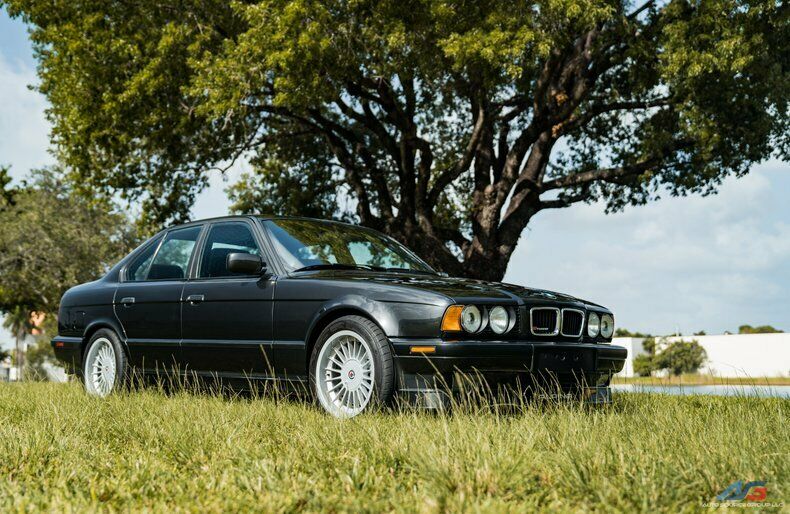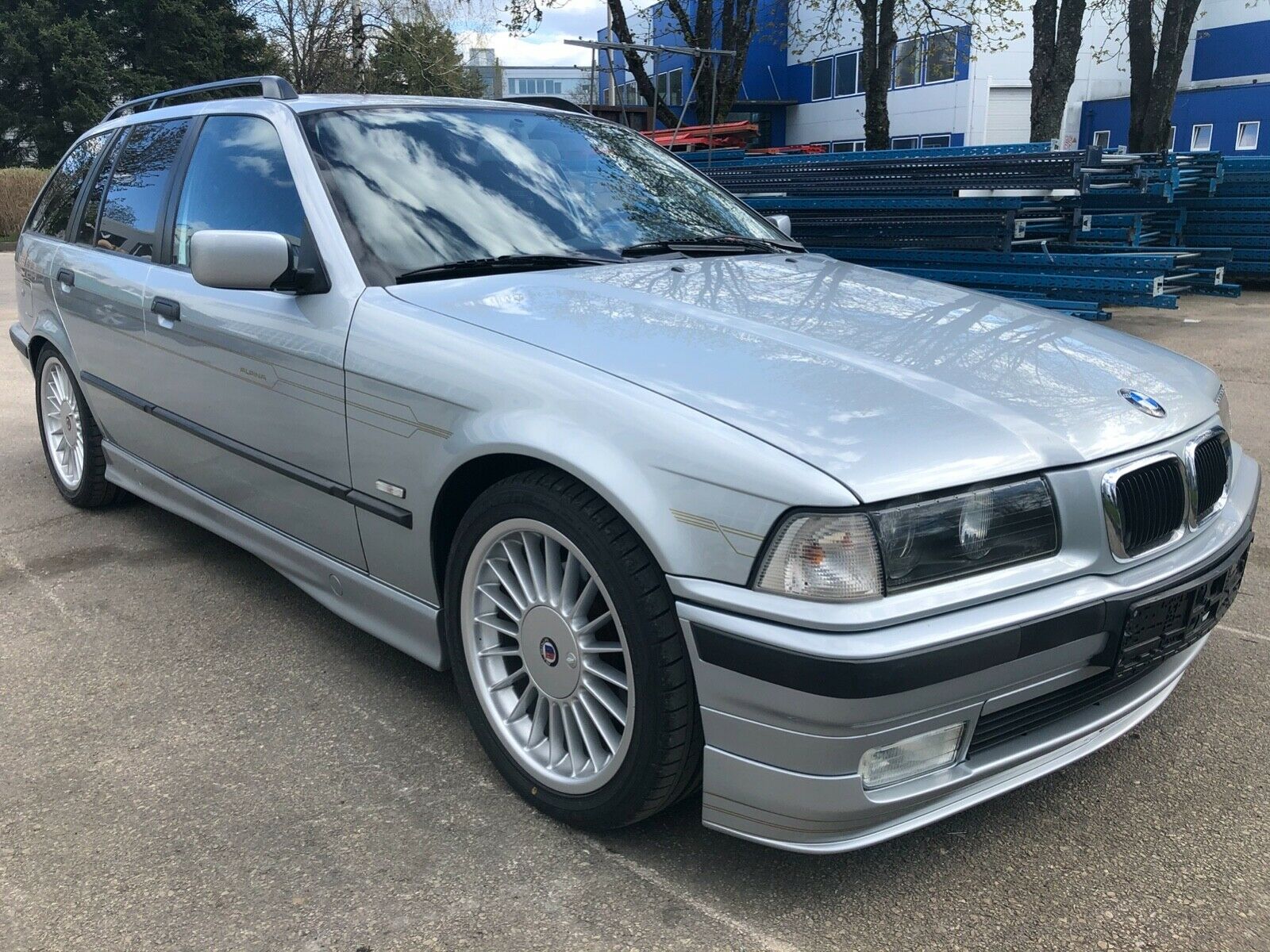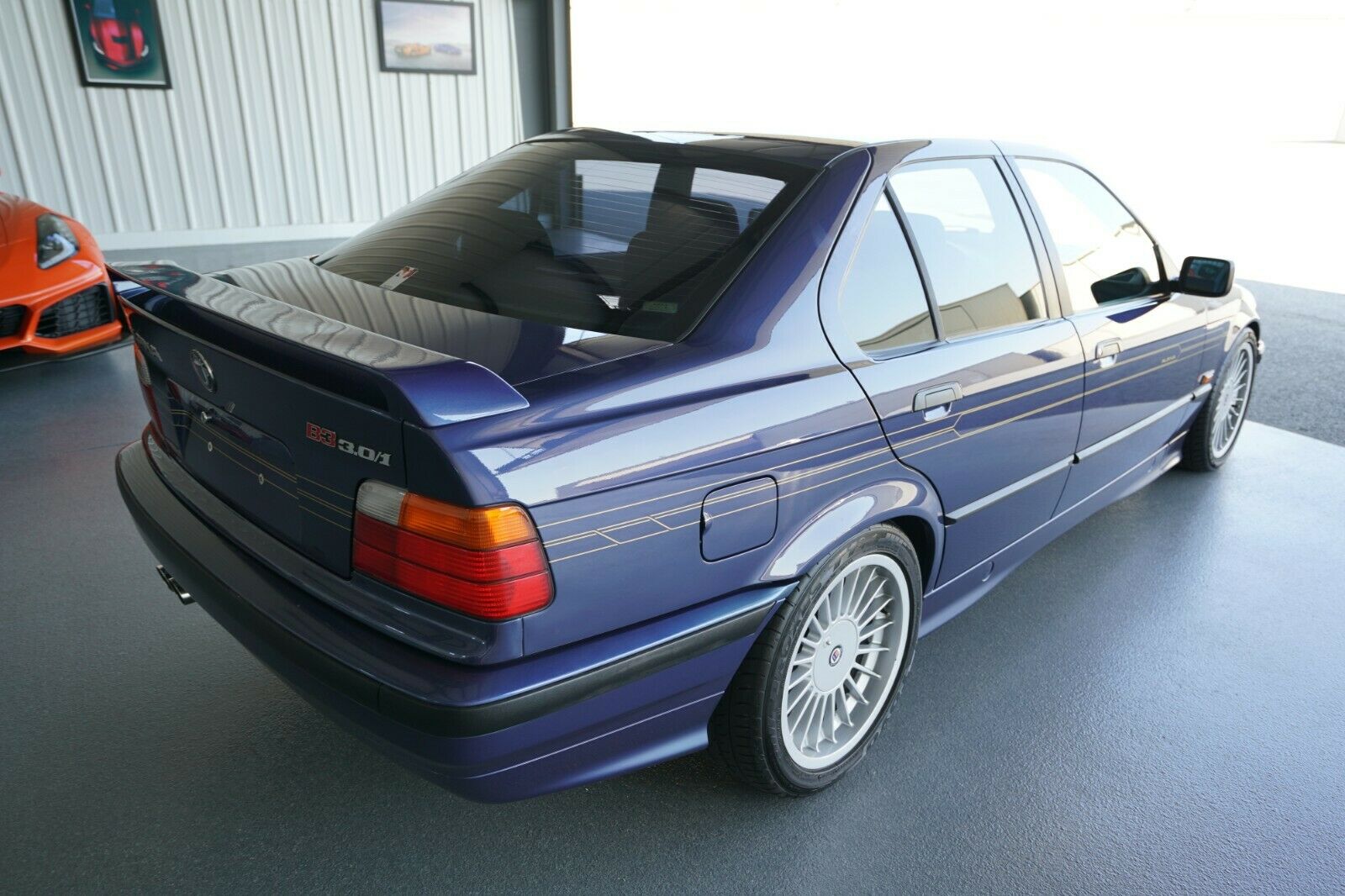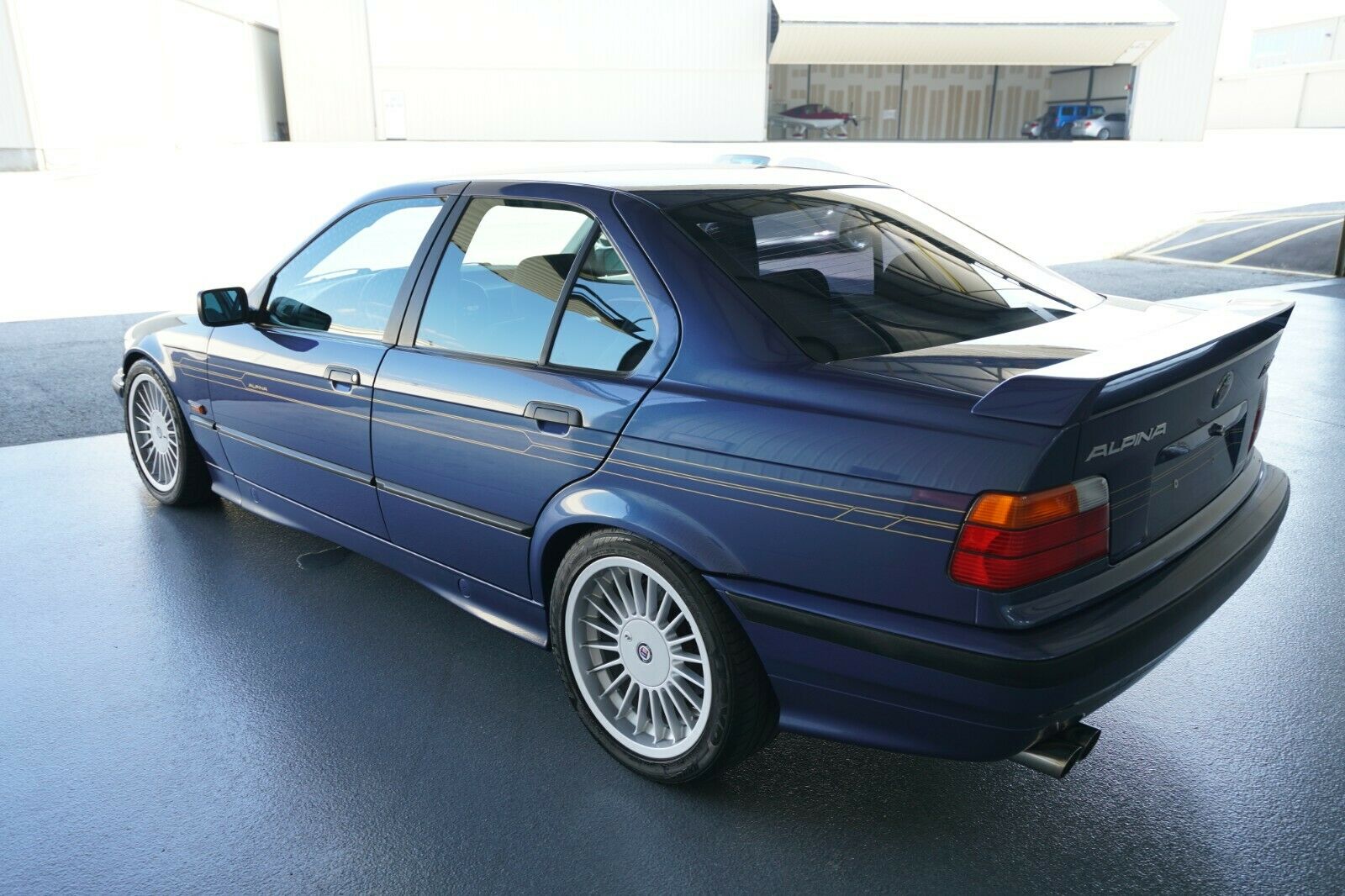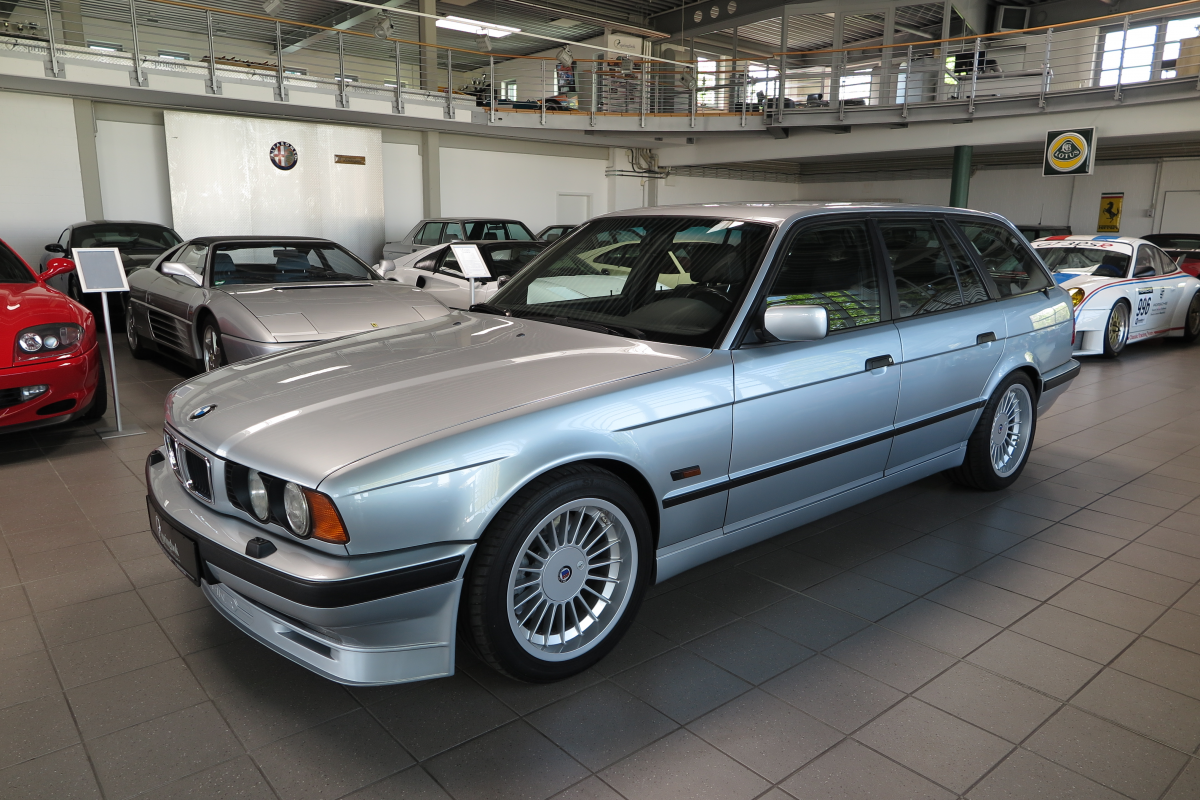Alpina has always struck me as one of the most thorough tuners in the world. Their research and development of engines, suspension and exhaust is second only to perhaps Ruf and AMG, thanks largely to their close associations with the factory. Inside the fit and finish of the cars is perhaps even better than they came originally; beautiful details that make the cars stand apart. And visually Alpinas have always been the best looking BMWs out there in my opinion; subtle aerodynamic tweaks, beautiful wheels and striking but tasteful “go faster†stripes that distinguish Munich’s best. But even amongst Alpinas there are special models, and the E34 B10 BiTurbo is one of them. Alpina took a normal 535i and made it’s own interpretation of what the M5 could be; instead of a high-revving twin cam S38, you got two turbochargers with enough torque to embarrass those boys from Affalterbach. Alpina achieved this through a full custom build; Mahle pistons, custom oil sprayers to cool the them, stronger connecting rods, sodium-filled valves and bespoke intake and exhaust systems – but then, Alpina’s never been shy about producing it’s own items. While all Alpinas are rare, the B10 BiTurbo was fairly popular; of the 1600-odd E34s Alpina built, a full 507 of them were B10s.
Tag: Softlines
While some other aftermarket tuners such as Ruf and Renntech offer turned up versions of the already potent cars, Alpina operates slightly differently – filling in the voids of models not offered by the manufacturer. There are plenty of examples of this, and if often seems to be misunderstood; Jeremy Clarkson’s review of the Alpina Roadster is probably the most notable case. A slower, softer, automatic version of the hardcore roadster certainly doesn’t make a lot of sense at first glance. But what Alpina does is give enthusiasts the opportunity to enjoy the performance that BMW offered in a slightly different package that sometimes outperforms the original platform car. One of the notable missing gaps in the BMW lineup in the mid 90s was a faster version of the E36 Touring; building off the earlier B6 – effectively, Alpina’s 4-door M3 challenger built between 1992 and 1993 with a bespoke engine and typical Alpina upgrades, the company later launched the Japanese-only market B6 2.8 Touring. Produced between 1996 and 1998, only 136 of these small wagons were produced, again utilizing the 240 horsepower bespoke Alpina motor, special wheels and interiors, Alpina’s own body kit, exhaust and suspension. They were available in 3 colors only; red, green, and silver:
CLICK FOR DETAILS: 1997 Alpina B6 2.8 Touring on eBay
1 CommentWhen BMW upped its game in the E36 chassis with the introduction of the M3, specialty tuner Alpina answered with the B3 3.0 and later 3.2 in step with BMW. The successor of the slightly less powerful B6 model, the B3 kept many of the same improvements to the E36 chassis – unique stabilizers, springs and shocks, and larger brakes. Inside the B3 received the normal Alpina-style shift knob, steering wheel and seats, and in their typical style Alpina provided unique front and rear spoilers along with their own badging. Of course, the package was rounded out by some of the best looking wheels ever fit to a BMW. While the B3 was down on power to the European M3 3.2, it wasn’t really much slower – again in typical Alpina fashion, the car was tuned to make the most of the power that was available rather than just provide a shockingly high output number. A reported 1,000 of these ultra-exclusive B3s were produced, with about 2/3rds of those being the earlier 3.0 model, and in four different configurations – Coupe, Cabriolet, Touring and Sedan. This is one of the 741 3.0s made of which 339 were sedans, and it poses the interesting question – would you rather have this or the European-spec M3 I just looked at?

